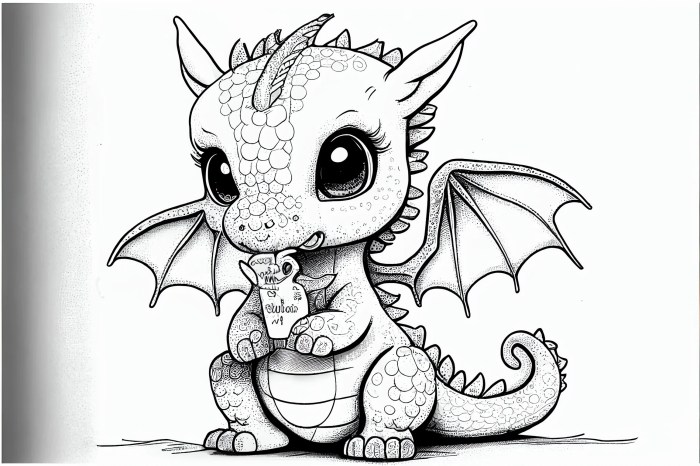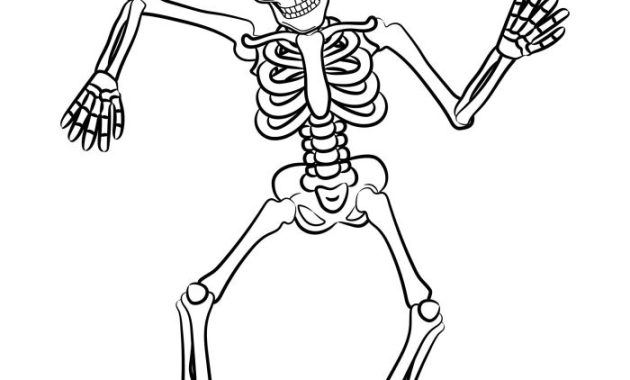Target Audience & Design Considerations

Skeleton coloring pages for kids – Creating engaging and effective skeleton coloring pages requires careful consideration of the target audience and design elements. The goal is to produce pages that are both fun and developmentally appropriate, stimulating creativity while providing a positive coloring experience.These considerations directly impact the overall design and appeal of the coloring pages, ensuring they resonate with the intended users and achieve their educational and entertainment purposes.
We’ll explore the key aspects to keep in mind.
Ideal Age Range
The ideal age range for these skeleton coloring pages is generally between 4 and 8 years old. Children within this age group possess the fine motor skills necessary to handle crayons or colored pencils effectively and are also developing an understanding of shapes, sizes, and basic anatomy. Younger children might find the detail too challenging, while older children might find the designs too simplistic.
However, the complexity can be adjusted based on the specific design, with simpler designs aimed at the younger end of the range and more intricate ones suitable for older children.
Preferred Art Style, Skeleton coloring pages for kids
A cartoonish art style is generally preferred for children’s coloring pages. Cartoon skeletons, for example, can be depicted with friendly, rounded features, large expressive eyes, and perhaps even a playful grin. This approach avoids any potentially frightening aspects associated with real skeletons, making the imagery more approachable and enjoyable for young children. Avoid overly detailed or realistic representations of skeletons, as these might be unsettling for some children in this age group.
Think simple, friendly, and fun!
Importance of Simplicity and Clear Lines
Simplicity and clear lines are crucial for children’s coloring pages. The designs should feature bold Artikels that are easy for children to follow. Intricate details or overly thin lines can be frustrating for young children to color within, leading to frustration and a less positive experience. Thick, easily visible lines provide a clear guide for coloring and allow children to focus on the creative aspect of the activity.
A good rule of thumb is to ensure the lines are wide enough to be easily colored without going outside the boundaries.
Let’s embrace the playful side of spirituality! Skeleton coloring pages for kids offer a unique opportunity to explore themes of life and death in a gentle, age-appropriate way. For those seeking simpler designs, you might find a wealth of inspiration at this website with easy coloring pages for kids , which can then inspire your own creative journey with skeleton designs.
Returning to our skeletal friends, remember that even in the seemingly macabre, there’s a beauty in the intricate design of life’s framework.
Use of Positive and Engaging Imagery
Positive and engaging imagery is paramount. The skeleton designs should be presented in a fun and playful manner, avoiding anything that could be interpreted as scary or unsettling. For instance, the skeleton could be depicted playing an instrument, wearing a costume, or engaging in other fun activities. Adding playful elements, such as bright colors, whimsical accessories, or fun backgrounds, enhances the overall appeal and makes the coloring experience more enjoyable.
Consider incorporating elements that are familiar and appealing to children, such as cartoonish accessories, vibrant colors, and simple, engaging backgrounds.
Skeleton Anatomy & Design Elements

Creating fun and engaging skeleton coloring pages for kids requires understanding the basic anatomy and incorporating design elements that make them appealing and easy to color. We’ll explore key skeletal features, exciting poses, and techniques to add visual interest.Let’s delve into the fascinating world of skeletal structures and how to represent them creatively for young artists.
Key Skeletal Features for Coloring Pages
Choosing the right skeletal features is crucial for creating age-appropriate coloring pages. We want to ensure the illustrations are both educational and enjoyable. Overly detailed skeletons can be overwhelming for children, so we should focus on the most recognizable and easily colored parts.
- Skull: A simplified skull with large eye sockets, a nose, and a jawline is perfect. Avoid intricate details like sutures.
- Ribcage: Represent the ribcage with simple, slightly curved lines forming a cage-like structure. Don’t worry about individual ribs.
- Femur (thigh bone): The femur is a long, strong bone, easily depicted as a slightly curved line.
- Humerus (upper arm bone): Similar to the femur, the humerus can be represented as a long, slightly curved line.
- Tibia and Fibula (lower leg bones): These can be simplified as two parallel lines, slightly diverging at the bottom.
- Hands and Feet: Keep the hand and foot bones simplified, perhaps as simple mittens and booties.
Skeleton Poses and Actions
Adding dynamic poses will make the coloring pages more engaging. Think about how children might interact with a skeleton in their imagination.
- Standing: A simple, upright skeleton is a great starting point. This allows children to focus on coloring the different bone shapes.
- Dancing: A skeleton doing a simple dance move, like a jig or a twirl, adds a playful element.
- Playing: Depict the skeleton playing an instrument, kicking a ball, or waving. These actions bring personality to the design.
- Jumping: A skeleton in mid-jump is a fun, dynamic pose. It allows for creative representation of movement.
- Sitting: A relaxed pose, suitable for a quieter, more contemplative image.
Using Line Weight for Depth and Dimension
Varying line weight is a simple yet effective technique to add depth and dimension to your skeleton drawings. Thicker lines can be used for the main bones, while thinner lines can be used for smaller details. This creates a sense of three-dimensionality, making the skeletons more realistic and visually interesting. For example, the thicker lines can define the main body parts (like the femur), and thinner lines can define the smaller hand bones.
Skeleton Illustration Examples
Here are three unique skeleton illustrations suitable for coloring pages:
- Skeleton Playing the Drums: This illustration features a skeleton sitting on a stool, holding drumsticks and enthusiastically playing a drum set. The skeleton is depicted in a slightly crouched position, adding dynamism. Thicker lines are used for the main bones, while thinner lines are used for the details of the hands and fingers holding the drumsticks. The drum set itself can be detailed with simpler shapes, making it easy for children to color.
- Dancing Skeleton Couple: Two skeletons are shown waltzing. One skeleton wears a top hat, while the other wears a dress. The pose is graceful, with flowing lines suggesting movement. The line weight varies to create depth; thicker lines for the main body structure and thinner lines for the details in the clothing.
- Skeleton Astronaut: A skeleton in a spacesuit, floating in space. The spacesuit can be detailed with simple shapes, while the skeleton’s pose can be dynamic, suggesting weightlessness. The thicker lines define the spacesuit and the main body structure of the skeleton, while the thinner lines provide detail in the spacesuit’s features and the smaller bones.
Popular Questions: Skeleton Coloring Pages For Kids
What’s the best age range for these coloring pages?
Ages 3 and up, depending on the complexity of the design. Younger kids will dig the simpler ones, while older kids can tackle the more detailed ones.
Can I use these pages for classroom activities?
Totally! They’re great for teaching about anatomy, Halloween, or just general creative expression.
Where can I find more similar resources?
Check out online resources and craft websites for more skeleton-themed activities and printable resources.
Are the pages suitable for both boys and girls?
Yeah, mate! Skeletons are awesome for everyone.

